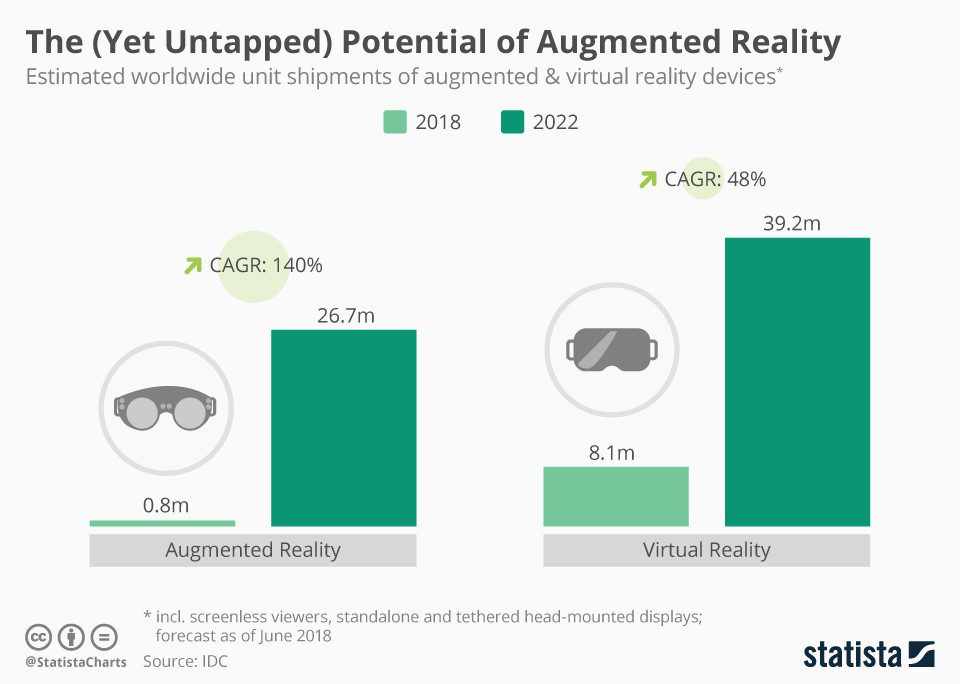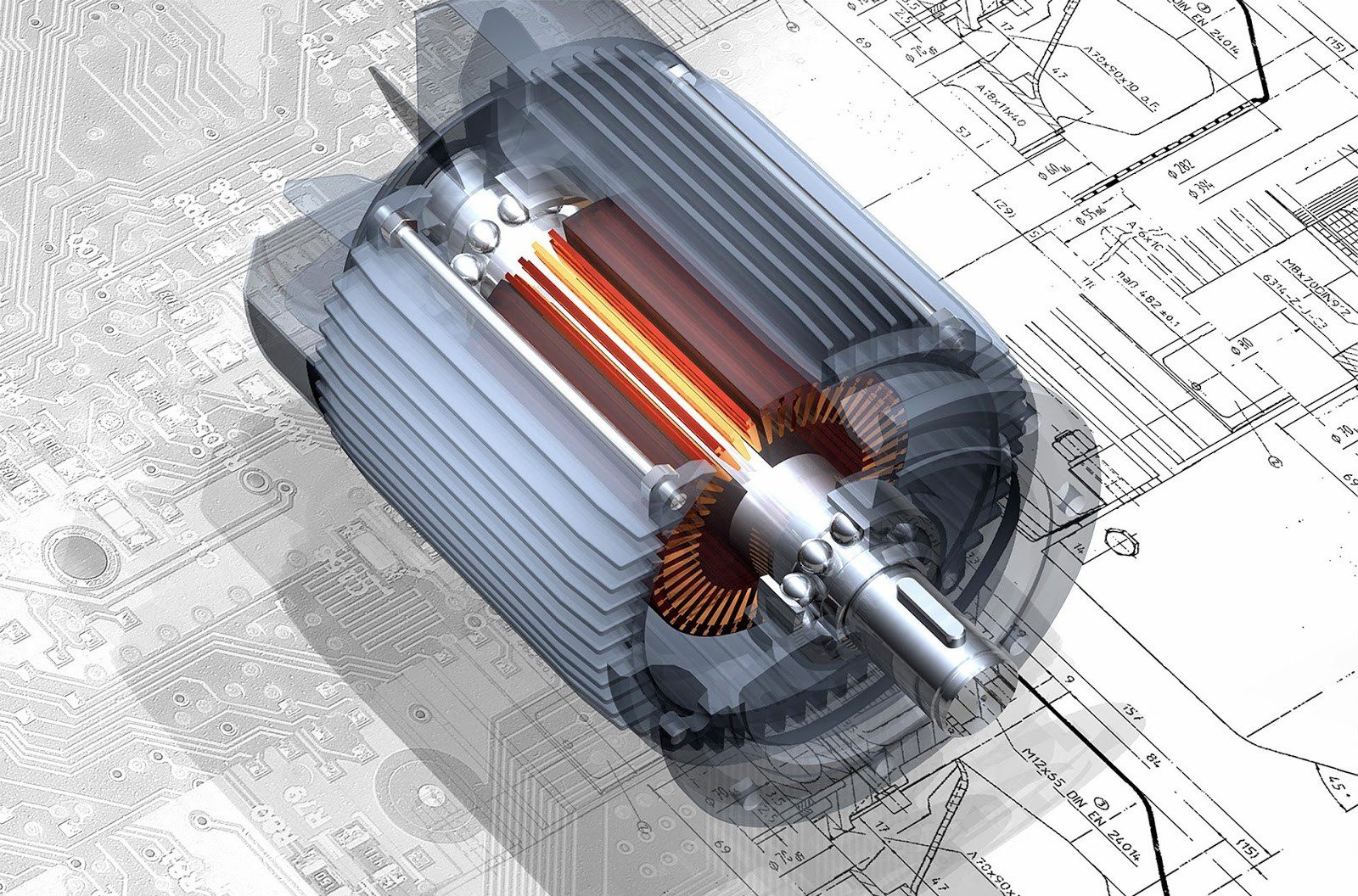
Click to learn more about author Sonal Mehta.
The manufacturing industry is an area where each step of any process counts. Even the smallest mistake in design or layout can lead to a loss of efforts and of money for companies. But, there is no need to worry anymore because augmented reality (AR) and virtual reality (VR) are here now. The remarkable ability of these technologies to simulate anything and everything is valuable for industries. Yet, many manufacturing companies are yet to realize its full capacity to transform everything in industries. So, how can AR and VR turn manufacturing upside down? Why are these needed in the industrial sector? Let’s take a look.
Need for AR and VR in the Manufacturing Industry
Augmented reality and virtual reality are technologies that have immense potential. In fact, many believe that AR will eventually become bigger than virtual reality. This is because it has the ability to blend into the real world seamlessly. And that is why it can turn the manufacturing industry upside down too. According to Statista, the latest estimates by the market research firm IDC prove that AR market will grow at a high rate in the near future. Moreover, AR device shipments will increase by more than 30 times between 2018 and 2022. It will outpace the growth of the VR market. Even though these technologies have just begun to spread, the outlook is phenomenal. Further, estimates predict that spending on AR technology will hit 60 billion Euros by 2020. Thus, these technologies have the full capacity to influence every sector in our lives. So, why will manufacturing lag behind?

How AR and VR can Transform Manufacturing and IIoT?
Augmented reality and virtual reality have a lot of advantages. On the one hand, they help in training workers in a cost-efficient manner. On the other hand, they also aid in getting products to the market quicker. Also, it has become easy to make assembly lines now and maintenance tasks are more efficient. Well, AR and VR can revolutionize the manufacturing industry. So, let’s take a detailed look at how it can do so.
Design and Visualization
Gone are those days when companies needed clay models and expensive prototypes to create 3D visualizations. Today, AR and VR are here to deliver very accurate and precise representations of real-life products. So, before cutting any metal or fixing a screw, these new technologies can aid in knowing the product designs and test their designs before any physical material is in for production.

In fact, AR and VR both are a boon for the aerospace and automotive industries. This is because the opportunity to test ergonomics and safety features is very improved.
Furthermore, many of the Original Equipment Manufacturers (OEMs) have started to depend heavily on CAVE (Cave Automatic Virtual Environment). One of such manufacturers includes the Mechdyne CAVE™ virtual reality system. These CAVEs help in enabling the design teams of the manufacturers to test and adapt designs with incredible accuracy. Also, the immersive nature of CAVEs with the ability to create digital twins has a lot of benefits. It helps designers to work in a collaborative manner and come up with better designs.
AR for Assembly Line
Any manufacturing process of products is incomplete without the assembling of components. This involves arranging hundreds and thousands of components in a precise order. From televisions to car engines, all manufacturing products need a new set of assembly instructions.
Well, AR applications have a huge capacity to transform the whole manufacturing sector. Following are some ways by which they can do this:
- It gives a new face to the delivery of real-time instructions to workers on the front line. AR can help in making assembly more accurate by providing a guide to all tasks.
- An important feature of AR is that it uses overlay images. Workers can use HMDs or glasses so that the instructions and support can be in their field of view at all times.
- As AR enables the hands-free operation and minimizes the need to check in at workstations, it increases the productivity of the assembling process.
- It also increases the knowledge of the workers on a machine or its parts on the assembly line. In fact, they can use the augmented data when they’re doing their particular tasks.

Bridging Skills Gap with AR
It is a fact that developing traditional training materials is a time-intensive process. Also, the information becomes out-of-date soon and needs constant manual updating. However, these problems can go away with AR:
- AR helps in capturing knowledge efficiently. Instead of wasting time on documentation, skilled engineers can create AR experiences in a passive manner.
- It uses advanced sensors and computer vision to capture audio and visual cues. These can document locations of the factories and work processes. Controls engineers can perform any task by wearing a headset and talk through the steps at the same time. Besides, training anyone is easier and cheaper than the traditional methods.
- AR also can bridge the skills gap by building a connection between remote experts and manufacturing plants. In fact, the interactive and visual communication helps workers do any task easily. They can complete unknown or challenging tasks or fix a problem with expert guidance. Even workers eligible for retirement can work flexibly if they want to continue working.
VR to Prepare and Train for Emergency Situations
Though training is an important part of manufacturing, workers must be ready for all sorts of situations. Moreover, this is not given enough importance in traditional training methods. Some industries where safety is the utmost priority are as follows:
- Process industries: Here, the operators and control engineers must be ready for any scenario. These include runaway reactions, chemical leaks or even an explosion. Some situations may occur annually such as a shutdown or a restart.
- Discrete and Hybrid manufacturing: In such manufacturing areas, operators must be ready for sudden product changeovers or equipment upgrades. Also, they must be well-prepared for emergency situations where one needs quick action to reduce risks.
This is where VR plays a crucial role. It has the potential to add immense value to the manufacturing industry by providing virtual environments for practicing. The feature of immersive digital twins can help control engineers to role-play and practice emergency response situations. They can also train for responding to such situations apart from learning how different responses can impact the operations. A digital twin is a blessing for training operators when the physical environment isn’t present. Also, workers can practice even if the facility is under construction or if they are in any remote location.
Remote Inspection and Maintenance
A significant advantage of AR and VR is that they can decrease inspection time and help in detecting errors. For instance, companies like Airbus have implemented AR technology to increase efficiency. In fact, AR helps in improving quality control at its installation and inspection departments too. Employees use the Supply Augmented Reality Tool (SART) to overlay a digital mockup over images of real systems. This is for identifying any faulty parts for replacement or modification.
Remote inspection is another feature that AR and VR provide. Trained specialists can visit a manufacturing facility virtually for safety inspections and routine maintenance. In fact, it is a faster and cheaper process. Besides, if an inspector can perform his task remotely, one can catch problems much earlier before they lead to a disaster. This can save manufacturing time, resources, or even worker lives.
Signing off…
Altogether, both augmented reality and virtual reality technologies have great potential to increase productivity and efficiencies for manufacturing companies. They have a wide range of benefits. Be it, reducing training costs or increasing knowledge retention, AR and VR are here to stay.
So, what are manufacturers waiting for? They should not have any second thoughts on AR or VR. In other words, they are the best friends for the manufacturing sector today.
